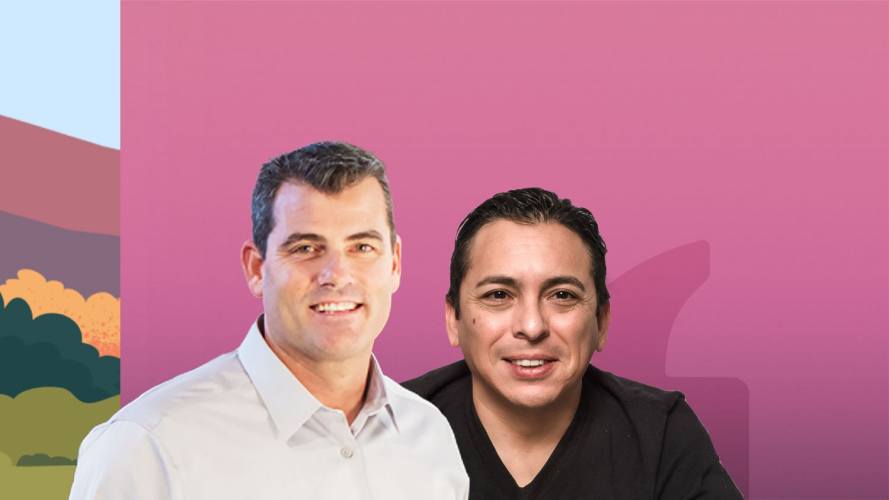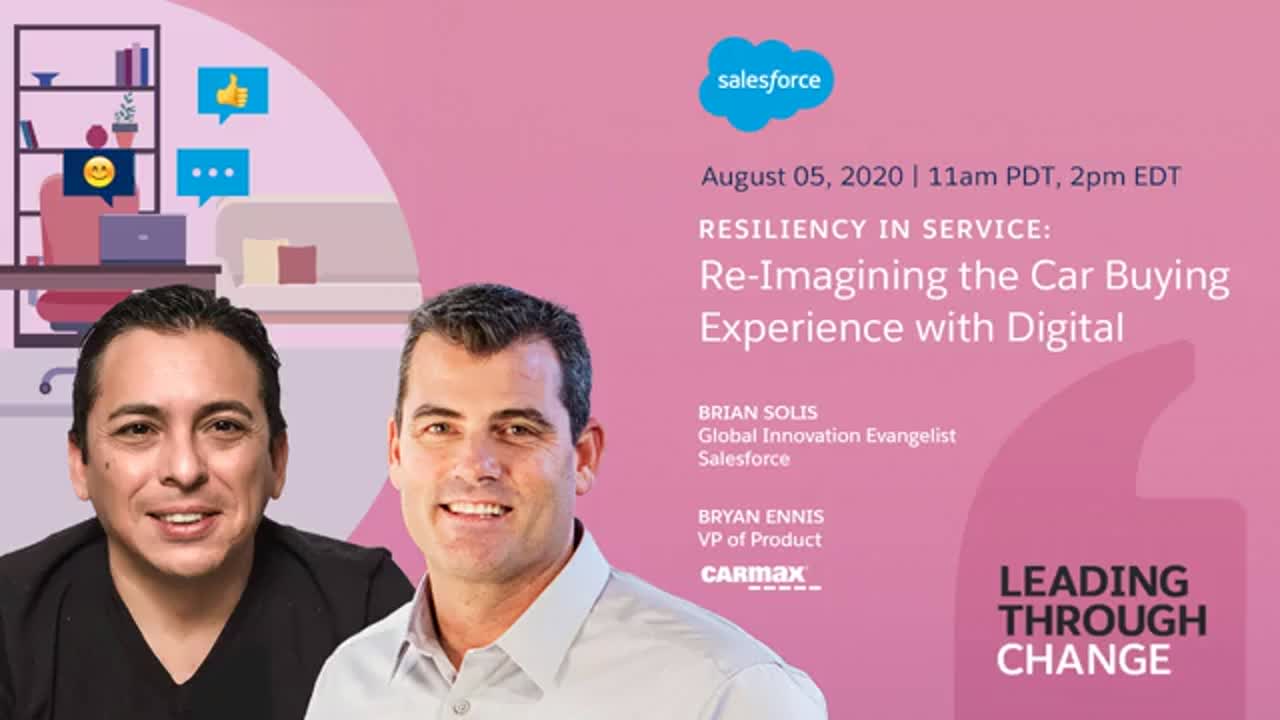This article is part 2 of our 5 part series in which Salesforce’s Global Innovation evangelist Brian Solis speaks with our customers about how they’ve transformed to adapt to change since COVID-19 hit in March 2020.
“I love walking into a car dealership and spending the better part of my day negotiating a fair price and trade-in value, and learning about extended warranty options.” – said no one ever.
In fact today, more shoppers now want to shop and purchase for a car online than ever before. According to J.D. Power’s 2021 U.S. Manufacturer Website Evaluation Study, 45% of consumers now express comfort with buying a car online.
Historically, the car buying experience has been slower in the digital transformation department than other consumer goods and retail industries. Even though online shopping has been around since the 1990s, most automotive digital sites, apps, and networks point to on-premise experiences to help see the car in person, take test drives, have negotiations and handshakes to complete a transaction.
Then, practically overnight, COVID-19 sparked a transformation, where consumers looked to digital channels and e-commerce became the main conduit for many facets of life, including shopping for a car.
Consider how quickly e-commerce replaced physical channels during the onset of the pandemic. McKinsey estimates that digital shopping in the U.S. experienced 10 years’ growth in three months. Even as shops and restaurants started to reopen in phases, with some having to close repeatedly, consumers were wary of physical shopping for fear of getting sick. According to Salesforce research, despite store reopenings, digital continued to grow by 71% in Q2 2020. And those retailers that, upon shutdown, embraced digital-first services such as buy online and pickup in-store (BOPIS), curbside or click and collect, saw digital revenues grow by 127% year over year.
Retailers must compete across industries to gain competitive advantage
What does all this have to do with buying a car? Everything.
It’s still a retail experience, one defined by digital and physical touchpoints. A consumer who’s digital-first, whether before COVID-19 disruption, or now as a result of pandemic lockdowns, learns to adapt to the convenience, speed, and control of shopping online.
To thrive in an increasingly digital world and to enhance customer experiences online and in-store, all retailers and consumer brands must understand and appreciate the customer’s experience and their expectations. My guest on the second episode of “Resiliency in Service” is a Trailblazer in automotive retail, Bryan Ennis, vice president of product at CarMax.
CarMax is America’s largest used-car retailer and a Fortune 500 company founded in 1993. From the beginning, the company placed customers, and their evolving expectations, at the forefront of the company’s values, value proposition, and experience. More so, CarMax saw itself, not just as a company that sells cars, but as an innovative, customer-centered retailer. One that places customers as their guiding light, starting with real-time data, observation, and listening to learn how to drive value-added opportunities throughout the journey.
“We approach our strategy and problems like a retailer,” Ennis revealed. “We recognized that in retail, customers were expecting a lot more convenience, a lot more control of the shopping experience. We knew that was going to show up in automotive, so we prepared early to get ahead of future customer expectations.”
CarMax prioritized digital transformation and omni-channel investments to the tune of $300 million that let the customer shop on their terms, whether online, in-store, or a seamless combination of both.
“We knew that a human-centered, high touch omni-channel experience would meet those needs,” Ennis explained. “Remember, this is a large purchase — customers want to see, sit in, and test drive the car before taking ownership, so our experience needed to give them options on where they do that, whether at home or in our stores.”
The acceleration of digital transformation and digital-first consumerism
When COVID-19 reached the U.S. and led to shelter-in-place orders nationwide, CarMax was mostly prepared. The company had already been rolling out an omni-channel shopping experience nationwide. So when the pandemic accelerated the shift to customers wanting to do more from a distance, online, with convenience and now also with peace of mind and safety, CarMax accelerated its rollout. In addition, the company quickly rolled out new protocols for digital and physical touchpoints to optimize customer convenience and well-being as well as the health and safety of its associates.
This meant creating a retail-like experience where customers could shop online or via the CarMax app. Then they could visit a local store where extensive safety measures were in place in a variety of critical scenarios such as inspecting a vehicle, taking a test drive (solo, without an associate), and completing the transaction.
Speed, agility, and corporate culture are key pillars in driving experience innovation
Once Ennis and his team exceeded safety protocols, they turned their attention to better understanding the current needs of their customers. By asking the right questions and listening to their customers, they learned that digital, speed, and safety mattered most to everyone. This led to the creation of the auto industry’s equivalent of curbside pickup, CarMax Curbside, in only a few weeks’ time.
“We knew customers wanted a fast experience, outside the store, comparing it with contactless curbside experiences they were having with other brands,” explained Ennis.
CarMax learned that tapping into their culture would be instrumental in driving change, innovation and overall operational excellence in this new environment. The key was to empower teams to learn fast, across the organization, and facilitate testing in market, quickly and at scale.
“Our key value of putting people first means we put our customers, our associates, and our communities first. In every action, we worked to live this value. It’s instilled across all of our teams across the entire customer journey,” Ennis urged.
Digital and physical are all part of the same experience; innovate accordingly
Retail is retail to customers, no matter if it’s in person or online. It’s all held to the same standards regardless of the industry. Buying a car shouldn’t be any different. While the pandemic disrupted markets and accelerated digital transformation, digital was already becoming more and more prevalent over time. COVID-19 only accelerated the inevitable. Even though traditional retailers have had a long runway to get digital right, they now get a second chance to make up for lost time by putting the pedal to the metal on transformation and innovation.
If it’s one thing we can learn from CarMax’s journey of resilience, it’s that putting people first, meaning both employees and customers, uncovers needs and new opportunities, inspires the testing of new concepts, and delivers scalable solutions that create value and drives better experiences all around. Connecting the digital and human experience builds confidence and trust, features anyone would find invaluable.
Wondering how to reopen your business? Regardless of where your company is in your journey, check out “The New Retail Playbook” to learn how to adapt today and prepare for future unexpected events while building a new level of confidence with shoppers.





























